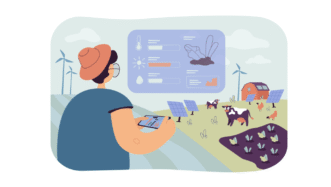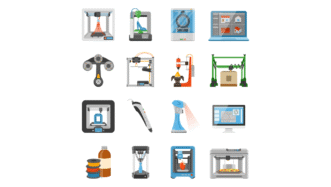LESSON OVERVIEW
In this lesson plan about warehouse automation, students practise listening skills while expanding their technical vocabulary related to robotics and automation.
LEAD-IN & LISTENING PRACTICE
To activate students’ knowledge of the theme of the lesson, the first activity invites them to discuss the differences between traditional and automated grocery packing warehouses and predict the practical aspects of the latter. Then, students look at a description of the process of preparing an order in an automated warehouse and complete the gaps in the text with some technical words provided (e.g. sensors, totes) to verify their predictions. The next task prepares students for a video about an automatic grocery packing warehouse. They discuss and anticipate the answers to four questions and then watch the video for the first time to check their answers. Next, as a pre-listening task for the second part of the video, they try to match five technical half-phrases and then explain how they could be related to the warehouse. Students check their answers and engage in a discussion about different aspects of automated warehouses.
TECHNICAL LANGUAGE PRACTICE
Their next task is to analyse five sentences from the video and try to guess the meanings of the underlined phrases in each of them (e.g. custom-built, gripper assembly). This is followed by a consolidation activity in which students first complete the gaps in ten categories with one word from the lesson each and then come up with two things that belong to each category. Afterwards, students analyse the process of delivering the stock to an automated warehouse and discuss its possible steps. Finally, this lesson plan about automation ends with a speaking activity in which students speculate how four given innovations (e.g. cobots, drones) would make this process more efficient.
WORKSHEETS
Subscribe to unlock these and many other Standalone lesson lesson plans with the Unlimited plan
Subscribe













So complete!!!!!
The video is great in this lesson, but exercise 8 is terrible, it doesn´t explain clearly enough that it can be ANY word from the entire lesson, or rather ESL Brains normally uses words from the previous ex or details it a lot better; it would be so much better if a selection of words to choose from was put on the gap fill page, otherwise the students find it virtually impossible to remember, in this case, we did half the lesson last week, and the other half this week. It isn´t that we didn´t remember as such, more like the instructions are simply not reinforced enough. Then the second part of ex 8 feels like primary school work after such an advanced video and gap fill – I am exhausted after this lesson! I normally love ESL, but this lesson was a real challenge to get through.
Thanks for your feedback. The purspose of the first part of the exercise was to elicit the new vocabulary by giving students some context. The second part prompted students to come up with some connotations, which is just one of the ways to help students reinforce new language. I think the issue here might have been the fact that the new vocabulary wasn’t really that ‘new’, as it had been introduced a week earlier. This is not something that an author can foresee – when we design a lesson, we assume it will be done in one sitting. As the reality is sometimes different, I would suggest giving students some more cues to point them in the right direction, e.g. a cue for ‘custom-built’ could be ‘not ready-made’.